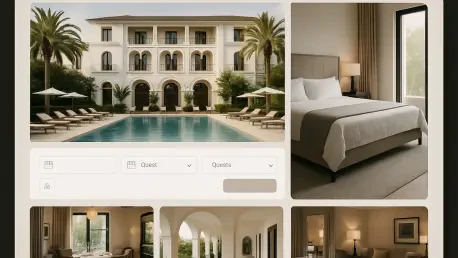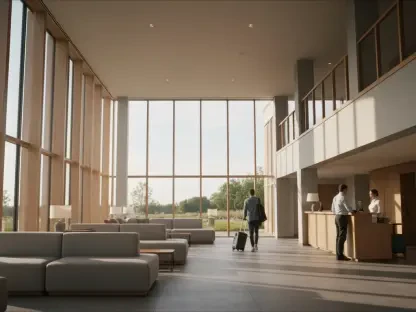Picture a potential guest browsing online, seeking the perfect hotel for a much-needed vacation, only to abandon a website within seconds due to a clunky layout or confusing navigation. This scenario highlights a critical challenge in the hospitality industry: capturing and retaining attention in a digital-first world. Hotel web design plays a pivotal role in shaping first impressions, influencing booking decisions, and fostering lasting engagement with guests. A well-designed website can be the difference between a completed reservation and a lost opportunity.
The purpose of this FAQ is to address key questions surrounding the impact of hotel web design on bookings and guest interaction. It explores essential concepts such as current design trends, the balance between aesthetics and functionality, brand identity, user experience, and innovative approaches. Readers can expect actionable insights and practical guidance on leveraging web design to enhance performance and create meaningful connections with travelers.
This discussion aims to provide clarity on how strategic design choices can transform a hotel’s online presence. From understanding the importance of immersive experiences to prioritizing accessibility, the content delves into various facets of creating effective websites. By the end, a comprehensive understanding of how design drives tangible results in the hospitality sector will emerge.
Key Questions or Topics
What Are the Current Trends in Hotel Web Design?
Hotel web design is evolving rapidly to meet the expectations of modern travelers who crave unique and seamless online experiences. One pressing challenge is standing out in a crowded digital marketplace while maintaining authenticity. Trends are shifting toward creating deeper emotional connections through visuals and storytelling that reflect a property’s distinct personality, ensuring guests feel engaged before they even arrive.
A significant trend is the use of interactive and immersive elements, such as virtual tours or high-quality imagery, allowing visitors to visualize their stay. Additionally, authenticity in design—showcasing real photos over generic stock images—builds trust and relatability. Another emerging focus is integrating AI tools for inspiration, though the emphasis remains on genuine narratives to avoid a mechanical feel.
These trends are not mere fads but responses to consumer demand for transparency and personalization. For instance, a hotel website featuring a virtual walkthrough can increase booking intent by offering a tangible sense of the property. Staying abreast of such developments ensures that design remains a competitive edge in capturing guest interest.
How Does Web Design Balance Creativity and Performance?
Achieving harmony between creative expression and measurable outcomes is a core concern in hotel web design. Aesthetics alone cannot guarantee success if the site fails to convert visitors into guests. The challenge lies in crafting visually stunning designs that also prioritize functionality, ensuring that every element serves a purpose in driving bookings.
Collaboration between design and SEO teams is vital to align creative choices with performance goals like higher conversion rates. Designs should reflect the hotel’s brand and value proposition rather than a designer’s personal style, with layouts and visuals strategically planned to guide users toward making reservations. Open communication during production prevents delays and ensures the end product is both beautiful and effective.
Evidence from industry practices shows that websites optimized for performance often see improved metrics, such as reduced bounce rates and increased time on site. A visually appealing design that loads slowly or lacks clear calls-to-action can deter potential guests, underscoring the need for this balance. Prioritizing both aspects creates a seamless experience that captivates and converts.
Why Is Brand Identity Crucial in Hotel Web Design?
Building a recognizable and trustworthy brand through web design is essential for hotels aiming to foster loyalty among guests. Inconsistent branding across digital touchpoints can confuse visitors and erode confidence in a property’s reliability. The focus here is on how design reinforces a hotel’s unique identity to create a lasting impression.
Consistency in visual elements, such as logos, color schemes, and typography, helps establish recognition across platforms. For many independent hotels, refining existing brand components using style guides is more feasible than a complete overhaul, ensuring a cohesive look without excessive costs. Strategic investments in design maximize impact by focusing on elements that resonate with the target audience.
This approach builds trust by presenting a unified image that guests can rely on at every interaction. A website that mirrors the hotel’s on-site experience—through matching tones and imagery—reinforces authenticity. Strong brand identity through design not only attracts bookings but also nurtures long-term relationships with travelers.
How Does User Experience (UX) Impact Bookings?
User experience in hotel web design is a determining factor in whether a visitor completes a booking or leaves frustrated. Poor navigation or complex booking processes can drive potential guests away, directly affecting revenue. The goal is to create an intuitive and accessible online journey that keeps users engaged from start to finish.
Key UX elements include a streamlined booking flow, clear navigation menus, and adherence to ADA compliance for inclusivity. Simplicity is paramount—when done right, good UX often goes unnoticed, but flaws like slow load times or cluttered layouts immediately stand out. Thoughtful content organization ensures users find what they need without unnecessary effort.
The impact of UX on revenue is significant, as a frustrating experience can lead to abandoned bookings. Hotels that prioritize accessibility and ease of use cater to a broader audience, enhancing satisfaction and conversion rates. A focus on UX transforms a website into a powerful tool for securing reservations and building positive impressions.
What Innovative Approaches Can Enhance Engagement Through Design?
Innovation in hotel web design offers exciting opportunities to captivate guests in unique ways, addressing the challenge of standing out in a competitive industry. Traditional static pages often fail to inspire action, prompting the need for creative solutions that engage users on a deeper level. Such approaches can turn browsing into bookings by making the experience memorable.
One notable example involves a collection of Hawaiian resorts where an interactive website was developed with a destination-focused theme. A feature like a “Which Island Fits You Best?” quiz not only entertained users but also guided them toward personalized booking decisions. This kind of innovation demonstrates how design can blend fun with functionality to inspire travel plans.
Collaboration across creative, development, and management teams is crucial for executing such projects effectively. These efforts show that thinking outside conventional design norms can create lasting connections with guests. Embracing innovative strategies ensures a website becomes a dynamic platform for engagement and conversion.
Summary or Recap
Hotel web design stands as a cornerstone for driving bookings and fostering guest engagement in the hospitality industry. Key trends like immersive experiences and authentic storytelling highlight the shift toward meaningful digital interactions. Balancing creativity with performance ensures that stunning visuals translate into tangible results, such as higher conversion rates.
The importance of brand identity cannot be overstated, as consistent design builds trust and recognition across touchpoints. User experience remains a critical factor, with intuitive navigation and accessibility directly influencing revenue. Innovative approaches, such as interactive quizzes, showcase how design can inspire and engage travelers in fresh ways.
For those seeking deeper insights, exploring resources on hospitality marketing trends or UX best practices can provide additional value. Industry reports and case studies often offer practical examples of successful web design strategies. This summary encapsulates the diverse elements that make design a powerful driver of success in the hotel sector.
Conclusion or Final Thoughts
Looking back, the exploration of hotel web design revealed its profound impact on shaping guest perceptions and driving business outcomes. Each facet, from embracing modern trends to prioritizing user experience, underscored a strategic approach that went beyond mere aesthetics. The insights shared painted a clear picture of design as a tool for connection and conversion.
Moving forward, hoteliers should consider auditing their current websites to identify areas for improvement in branding, functionality, or innovation. Investing in collaborative design processes and staying updated on emerging trends can yield significant returns in guest satisfaction and bookings. Taking these actionable steps ensures that a digital presence remains a competitive advantage.
Reflecting on this topic, it becomes evident that web design is not just a technical necessity but a strategic asset. Hotel owners and managers are encouraged to evaluate how their online platforms align with guest expectations and business goals. Embracing thoughtful design can transform a website into a gateway for memorable guest experiences and sustained growth.









